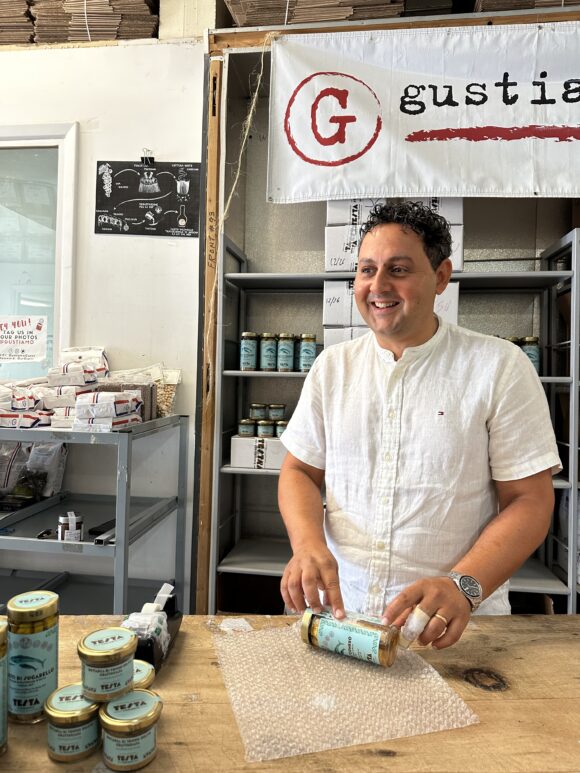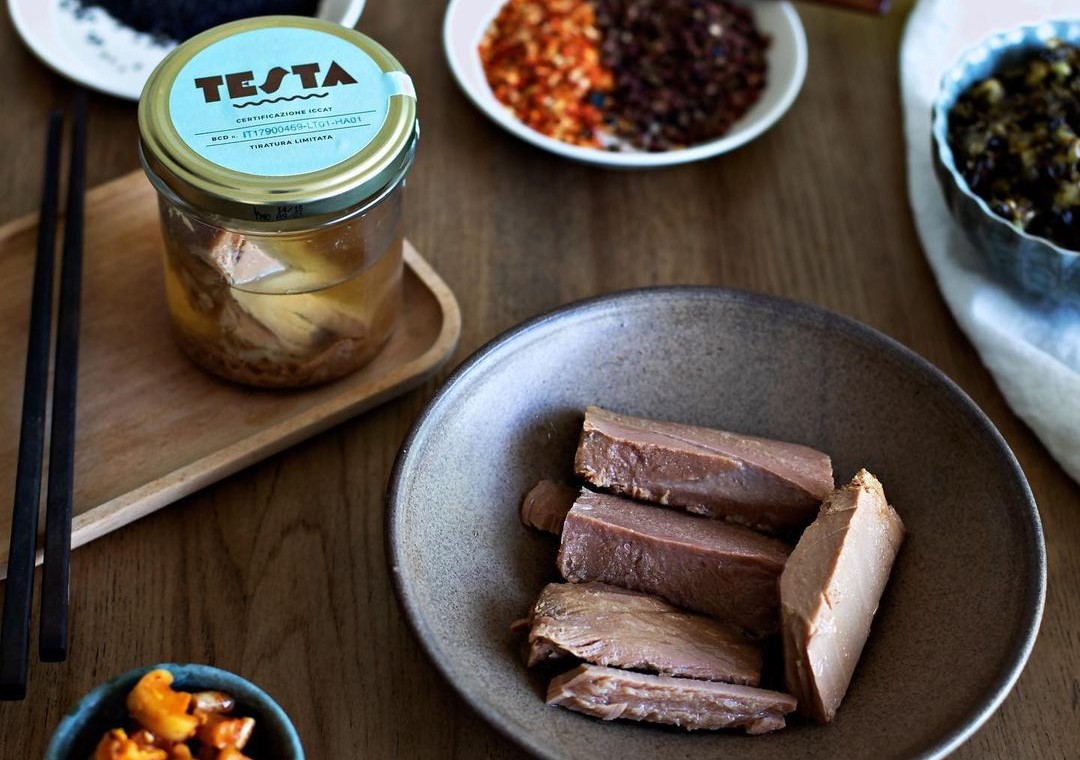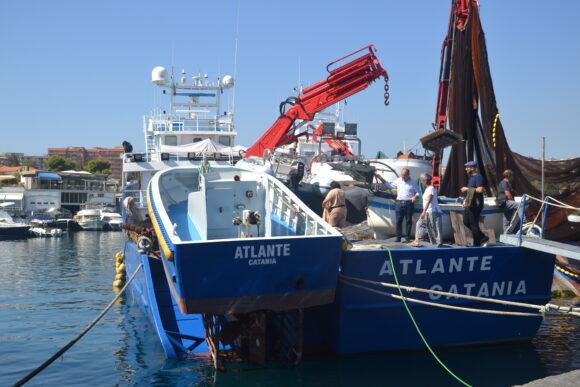If you want to eat bluefin tuna, this is the most responsible way to do it. Since 1800, the Testas have been sailing the Mediterranean and have based the survival of their family on the fishing biz. They are the only producers who catch the fish and conserve it themselves. They don’t buy fish at the market. They don’t have external manufacturers. They do it all, from sea to jar.
Bluefin tuna is a tricky topic, so much so that we have worked for four years to launch this product. We have asked all our difficult questions to the Testa fam, and they never failed to provide thorough answers. So, we want to let Tuccio Testa do the talking.

Gustiamo: How is your preserved tuna different from other conservas?
Tuccio: We know exactly where our bluefin tuna comes from, how big it was, which day it was caught. We are all on the boat during the fishing expedition, it’s a huge team work. Each jar of Testa tuna has an identity code printed on top, tracking where that specific fish comes from. Traceability is key.
G: Tell us more about the fishing expeditions, who is involved?
T: The fishing of bluefin tuna is a sacred ritual, it’s part of the culture of Sicily and of our family. In addition to us + our team, an EU observer must be present the whole time. They check that we respect all the regulations that the EU put in place to protect the bluefin tuna population from the risk of extinction.
G: How long are you at sea for?
T: The EU allows us to be at sea for only 30 days. Can you imagine having only one month to catch enough fish for the whole year? Thankfully, we have always reached our fishing quotas in time! In Italy, there are only 21 boats that can legally fish bluefin tuna. We own 2 of them, Futura and Atlante, and the EU dictates how much bluefin tuna each boat can catch.
G: Where do you go fishing?
T: Our favorite spots for catching bluefin tuna are around the southern coasts of Sicily, sometimes we venture to the waters of Calabria, but well… we prefer Sicilia!!
G: Normally, canned tuna comes from a different species, yellowfin or albacore, not bluefin. Why preserving bluefin tuna in jars?
T: We come from a family of fishmongers, and that’s always been synonym of humble life. But bluefin tuna is far from humble, it’s the king of the oceans! We decided to create a beautiful product that reflects the majestic creature it comes from. We put our face on it, gave it more value, and started taking pride in the hard work of our family.
G: How do you take such a special fish and turn it into jarred food?
T: We do everything in our own facility. The fish is cut by hand into fillets, and by hand it is placed into glass jars. Not metal tins, glass jars. Each part of the tuna is cherished and used for different products: Ventresca – the most luxurious, Filetti – the most versatile, Buzzonaglia – the no-waste product made with the super flavorful trimmings, and finally bluefin tuna bottarga, made with the eggs!
G: Let’s talk about olive oil, you chose to preserve your tuna in EVOO, why?
T: The most valued fish of the sea needs the highest quality oil. Testa tuna could have been preserved in nothing else but Sicilian extra virgin olive oil, organic, IGP certified. Extra virgin does not change the flavor of the tuna AT ALL. It actually gets some flavor from the tuna, becoming an outstanding oil to make pasta sauce!
G: You mentioned really restrictive EU rules, are these protocols helping the tuna population?
T: We wish every fish had rules like the ones we have to follow. That’s the only way to protect the sea, and we would be crazy if we wanted to empty out the sea. We all need a healthy sea to survive! After years of damage from industrial producers, the population of bluefin tuna in the Mediterranean is now growing.

